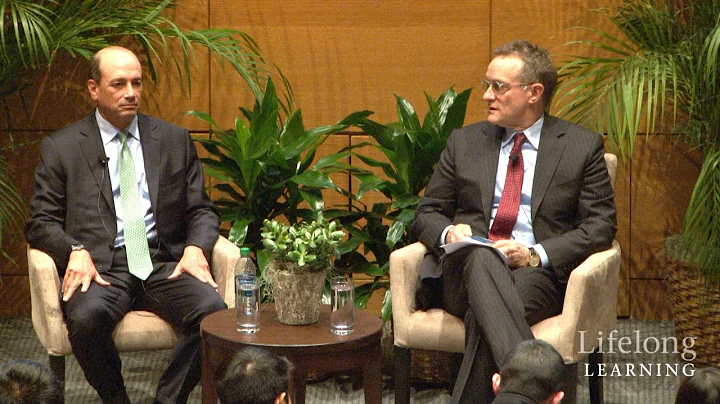Recently, the International Supercomputing Conference (ISC) released the latest version of the global supercomputing TOP500 list in Hamburg, Germany. The latest E-class ( floating point operations per second exascale) supercomputer "Frontier" launched in the United States "Successfully reached the top of the world. The Japanese supercomputer "Fugaku" that "dominated the list" for two consecutive years fell to the second place. Finland's newly deployed supercomputer "LUMI" squeezed into the top three and became a representative of the European supercomputing field.
In this list, the Chinese supercomputer that has topped the list for many years in a row does not appear in the top five. Some public opinion began to badmouth China's supercomputing, believing that China's supercomputing has fallen behind.
So, what is the actual development level of China’s supercomputing?
text | Tieliu
editor |
1
The new generation of Sunway supercomputer has strong performance
In the past ten years, global supercomputing has developed rapidly. China, the United States, and Japan are chasing after each other. China's Tianhe-2, Sunway TaihuLight, and the United States are at the forefront. At the top, Japan's Fugaku once ranked first in the TOP500. Among them, China's Tianhe 2 has topped the TOP500 list for 6 consecutive times, and Sunway·TaihuLight has ranked first on the TOP500 list for 4 consecutive times.

On February 25, 2019, researchers from the Institute of Computer Science, School of Computer Science, National University of Defense Technology tested the "Tianhe-2" supercomputer system in the Tianhe computer room. Picture | Due to the rapid development of supercomputing chip design and chip manufacturing, countries have more powerful supercomputing chips and stronger Internet networks. As a result, more powerful supercomputers have emerged.
Take the Sunway TaihuLight released in 2016 as an example. At that time, its performance was 100P, ranking first in the world. However, in just 6 years, today’s E-class supercomputing performance has already surpassed that of Sunway· TaihuLight. 10 times faster than .
This time, the American supercomputing frontier ran a peak measured performance of 1.012 exascale (1000P) floating point calculation speed in the benchmark test, becoming the world's first officially recognized E-class supercomputer.
In fact, my country’s new supercomputer has not been made public this year, nor has the results been submitted to foreign institutions, so naturally it has not participated in the TOP500 ranking. The British " Financial Times " also reported that China's first E-class supercomputer has been in operation for more than a year, but it did not participate in the rankings. "Chinese companies are now more focused on domestic competition, rather than what international competitors are doing."
According to disclosed public information, the computing power of the new generation Sunway supercomputer is provided by the independently developed multi-core SW26010P CPU. Although we have no way of knowing the specific parameters of the SW26010P CPU, there is a supercomputer based on the SW26010P on the TOP100 Chinese high-performance computer performance rankings in 2021. We can find out based on this supercomputer.

China’s top 100 high-performance computer performance rankings in 2021 (top 10 intercepted). Source: China Computer Society High Performance Computing Professional Committee
Judging from the information displayed on the list, the supercomputer only used 992 SW26010P chips to create a 13.9P supercomputer. As a reference, the performance of Sunway TaihuLight is 125P and uses 40960 SW26010 chips. After conversion, the performance of SW26010P is 5 times higher than that of SW26010. What’s even more frightening is that the efficiency of this supercomputer is extremely high, reaching 90.3%. As a reference, among the top 20 supercomputers on the TOP100 list, except for Sunway and TaihuLight , which have an efficiency of 74%, the other supercomputers have efficiencies between 46% and 62%.
As early as 2021, the new generation of Sunway supercomputer has "tens of millions of cores scalable first principles Raman spectroscopy simulation", "multi-architecture large-scale parallel symplectic structure electromagnetic full kinetic plasma simulation" and " Three applications of "real-time simulation of ultra-large-scale quantum random circuits" were shortlisted for the "Gordon Bell Prize". In the end, China’s supercomputing application team won this award for its application of “ultra-large-scale quantum random circuit real-time simulation”.
Here we would like to introduce " Gordon Bell Award ". This award was established in 1987. It is the highest academic award in the field of high-performance computing and applications in the world. It is mainly awarded to the most outstanding achievements in the field of high-performance applications and is known as the "Nobel Prize in the field of supercomputing."
Previously, "Gordon Bell Award" had been monopolized by the United States and Japan for nearly 30 years. Until 2016, the "Ten Million Core Scalable Global Atmospheric Dynamics Fully Implicit Simulation" based on the Sunway TaihuLight supercomputer won the "Gordon Bell Award ". In 2017, the "nonlinear large earthquake simulation" based on the Sunway TaihuLight supercomputer won the "Gordon Bell Award " again. Together with this award in 2021, this is the third time that an application based on Sunway supercomputing has won the "Gordon Bell Award ", demonstrating the strength of China's supercomputing and supercomputing applications.
In addition, the new generation Sunway supercomputer performs RQC (Random Quantum Circuit) high-performance real-time simulation, which is scalable to 42 million cores, with single-precision floating point performance up to 12 billion petaflops and mixed precision performance up to 44 billion petaflops. . Our country's joint scientific research team completed one million high-fidelity correlation samples in 304 seconds based on the new generation Sunway supercomputer. provides solid simulation support for the future development of quantum computing .
2
The far-sightedness of seventy years ago
The reason why China’s supercomputing can advance by leaps and bounds is largely due to the far-sightedness of the first generation of leaders of New China. In the early days of New China, it was devastated and impoverished. However, the founding leaders were very visionary and attached great importance to computer technology research and development.
In 1952, the country established an electronic computer research group, headed by Hua Luogeng, director of the Institute of Mathematics. The computer team proposed an outline idea of a serial tube computer , with performance parameters equivalent to the EDVAC computer and EDSAC computer.
[Note: EDVAC computer is a discrete variable automatic electronic computer, which is an early electronic computer in the United States. The EDSAC computer is an electronic delayed storage automatic computer. It is the first stored program electronic computer in the UK and the world to actually run. 】
During this period, Academician Xia Peisu completed the design of the first electronic calculator and controller, and wrote China's first handout on electronic computer principles. Professional training courses in computer design, programming and computer methods were opened in colleges and universities, and top technical students were sent to the Soviet Union for further studies.
In 1956, the country formulated a 12-year long-term plan for the development of science in our country, and listed projects such as the creation of our country's computing technology career as one of the four major emergency measures. The Chinese Academy of Sciences established a preparatory committee for the Institute of Computing Technology to concentrate talents in the institute, and relied on the technical drawings obtained from the Soviet Union and the tube factory aided by the Soviet Union in 156 projects to design and produce its own computers. .
In 1958, Zhang Zichang, a former senior engineer of the Seventh Ministry of Machinery, successfully developed the 103 computer after partially modifying the M-3 machine design drawings provided by the Soviet Union, with a computing speed of 3,000 times per second. A total of 36 units of this computer were produced.
In 1959, Professor Zhang Xiaoxiang used the БЭСМ-II computer still under development in the Soviet Union as a template to successfully develop the 104 computer. A total of 7 units of this machine were produced and ran 10,000 times per second. They played an important role in the development of the atomic bomb . The birth of
103 computer and 104 computer enabled Chinese computers to complete a leap from scratch. Moreover, because it is a copy of the Soviet Union’s advanced computer, its technical starting point is relatively high—second only to the United States and the Soviet Union.
In 1960, the 107 computer designed by Academician Xia Peisu and led by a team was successfully developed and installed at the University of Science and Technology of China on Yuquan Road, Beijing. The 107 computer is a small series-connected general-purpose electron tube digital computer. It is the first independently designed computer in New China, marking the leap from imitation to independent design of Chinese computers. University of Science and Technology of China is based on the 107 computer and has compiled "Computer Principles" and "Programming Lecture Notes" as teaching materials for the school's Computer Science, Mechanics, Automation, and Geophysics departments. In addition to serving teaching, 107 computers also serve fields such as tidal forecasting, ballistic calculations, nuclear physics, mechanics, and microwaves.
It was also from the 1960s that Sino-Soviet relations began to deteriorate. The Sino-Soviet Treaty of Friendship, Alliance and Mutual Assistance existed in name only, and Khrushchev withdrew all experts in China. At the same time, the West is also imposing a strict technological blockade on China.
Under the technological blockade of the United States and the Soviet Union, China could only follow the development route of independent design and independent production. In 1964, Harbin Military Industry successfully developed the 441B, the first all-transistor computer in New China, which was 6 years later than the RCA501, the first all-transistor computer in the United States. More than 100 units of
441B have been produced in Tianjin Electronic Instrument Factory, which are mainly used in military industry, scientific research, meteorology, oil field exploration, etc. The biggest feature of this machine is its high reliability and high maintainability. In 1966, a computer exhibition was held in Beijing, which coincided with the Xingtai earthquake. The 441B computer was the only computer that was not affected by the earthquake and ran stably.
In 1964, Wu Jikang successfully developed the 119 computer, which had a computing power of 50,000 times per second and was slightly stronger than the IBM 709 computer manufactured in the United States in 1958. In 1965, the 109 computer was successfully developed. The machine was composed of more than 20,000 transistors and more than 30,000 diodes , and had been operating stably for 15 years. Computers 109 and 119 made great contributions in the development of the hydrogen bomb in my country, and are known as the "meritorious machines" in the development of the hydrogen bomb.
In 1965, the first integrated circuit independently developed by China was born in Shanghai, entering the era of integrated circuits only 5 years later than the United States. In 1972, the independently developed large-scale integrated circuit was born at the Yongchuan Semiconductor Research Institute in Sichuan, achieving a leap from small and medium-sized integrated circuits to large-scale integrated circuits. It took eight years (1960 to 1968) for the United States to develop from small- and medium-scale integrated circuits to medium- and large-scale integrated circuits.
After Nixon’s visit to China in 1972, the relationship between China and the West eased. China purchased a small amount of stand-alone equipment through special channels, digested and absorbed it, introduced the old and brought out the new, and built its own production line. Chinese computers have since bid farewell to stand-alone computer production. The history of more than one hundred units.
After completing the imitation and mass production of foreign equipment, domestic computers have entered the era of mass production - the computers mass-produced include the 161 "Nanhua" brand desktop computer, the LX-121 bank interest machine, the 130 series, and the 150 series, 180 series computers. Among them, the 130 series computers have the largest output, with a total output of nearly a thousand units. The HDS-9 computer developed in 1979 can perform 5 million operations per second, which is twice the computing power of the IBM 370-168 computer in the United States in 1972.
At that time, although there was a 5 to 8-year gap between my country's computer technology and the West, it was catching up with the West in some areas. For example, the 1024-bit shift memory successfully developed by Shanghai Radio No. 14 Factory in 1975 basically reached The level of the same period abroad; the Shanghai Institute of Metallurgy of the Chinese Academy of Sciences also independently developed the ion implanter required for manufacturing integrated circuits, and exported it to Japan...
By the end of the 1970s, Chinese scientific researchers and industrial workers carried forward the spirit of self-reliance and self-improvement. , built China's own semiconductor and computer industry, and mastered the entire process technology from single crystal preparation, equipment manufacturing to integrated circuit manufacturing.
3
Completely dismantle the "glass house"
In the 1980s, under the guidance of policies such as "Buying is worse than building, and renting is worse than buying," and "Market for technology," the development of the semiconductor industry was seriously affected. Chips have also shifted from independent research and development to purchasing foreign chips. For example, in 1983, and Inspur began to use imported Intel8088 chips instead of domestic chips to assemble 0520 microcomputers. In the 1980s and early 1990s, the Great Wall 286, Great Wall 386, Great Wall 486, 2780 machine, Taichi 2220, Galaxy super minicomputer, HN2730 super minicomputer and other computers all use foreign chips. The "Galaxy 1" supercomputer, a representative model of China's fourth-generation computers, cost 100 million yuan. However, due to the large purchase of foreign hardware, it failed to have much positive effect on the progress of China's semiconductor industry.
By the end of the 1980s, it was difficult for China to produce a computer with its own technology. By the early 1990s, Chinese computer companies represented by Lenovo had turned to the " trade, industry, technology " route, only engaged in the assembly of low-value-added microcomputers, and had neither the ability nor the inclination to engage in chip research and development. The domestic chip market had completely declined. controlled by foreign capital.
After China lost its ability to independently develop and manufacture computers, the U.S. government began to strictly restrict the export of high-performance computers to China. At that time, the application of high-performance computing basically involved areas that were considered the lifeblood of the country, such as national defense and military industry, oil and gas exploration, and hydropower utilization. Since China did not have self-developed high-performance computers at that time, the computers it needed could only be imported, which were expensive and difficult to maintain and manage. China spends nearly 2 billion U.S. dollars on importing computers, and maintenance costs can easily reach tens of millions.
The former Geophysical Exploration Bureau of the Ministry of Petroleum Industry once spent a huge sum of money to purchase a mainframe from abroad. Unexpectedly, the other party would charge more than 10 billion for the later integration and maintenance costs. Not only that, the other party also put forward a humiliating condition that has been remembered by Chinese IT people for more than ten years - during the use of the equipment, in order to prevent the core technology of the machine from leaking, the equipment room uses fully transparent glass walls, and the other party must always monitor our country. Every move of the staff, even the startup password of the high-performance computer and the key to the computer room, must be controlled by the other party.
In order to completely dismantle the "glass house" and develop a domestic high-performance computer with completely independent intellectual property rights, our country's scientists embarked on an extremely difficult road to break through.
In 1993, China's high-performance computer Dawn-1 parallel machine was finally successfully developed. The strategic effect of Shuguang-1 was immediate: on the third day after its birth, the United States announced the lifting of the 1 billion computer embargo on China. It can be said that Shuguang-1 successfully broke the monopoly of foreign IT giants on my country's information technology and pushed the information industry onto the path of independent development again.
In 1995, with only a dozen researchers and 5 million yuan in funding, the Sugon 1000 large-scale parallel computer was successfully developed. Dawn 1000 has reached the international advanced level in the early 1990s and won the 1996 Special Prize for Scientific and Technological Progress of the Chinese Academy of Sciences and the First Prize of the 1997 National Science and Technology Progress Award.
In 1998, Dawn 2000 came out, and its overall level reached the international advanced level of the same period in the 1990s. In 2001, Dawn 3000 was born. In 2004, Sugon developed the 4000A, which became the first domestic supercomputer capable of exceeding 10 trillion operations per second. It also represented China's first entry into the global supercomputer TOP500 rankings, ranking tenth.
In 2008, Dawning 5000 was born. Its system peak computing speed reached 230 trillion floating-point operations per second. made China the second country after the United States to manufacture and apply commercial high-performance computers exceeding one petaflop.
In 2009, Tianhe-1, the first domestic petaflop supercomputer, was unveiled in Changsha, Hunan. In 2010, National Defense University upgraded Tianhe-1, making it the fastest supercomputer in the world at the time.
In 2010, Dawn 6000 came out. With a measured peak speed of 1271 trillion times per second, it ranked second in the 35th Global Supercomputer TOP500 in 2010.
In 2012, the Sunway Blu-ray supercomputer was put into use. The supercomputer uses 8704 Sunway 1600 chips and is equipped with Sunway Ruisi operating system. Although the absolute performance of the supercomputer is not high, it is the first time that China has achieved supercomputing CPU and operation after " market replaced technology " All systems are localized.
In 2013, National University of Defense Technology successfully developed Tianhe-2. Its performance of up to 55PFlops made it stand out among the others and topped the TOP500 list for six consecutive times. However, Tianhe-2 used supercomputing chips from Intel Corporation of the United States. Soon the US government banned the export of Intel supercomputing chips to the Chinese supercomputing center. A few years later, the National University of Defense Technology replaced the American supercomputing chip with the independently developed Matrix 2000 accelerator card and increased the performance from 55PFlops to 97.9PFlops.

On October 16, 2018, the "Sunway TaihuLight" supercomputer of the National Supercomputing Center in Wuxi was unveiled. Picture | It is worth mentioning that Sunway TaihuLight continues the high autonomy of Sunway Blu-ray supercomputer, and has achieved localization of all key technologies such as supercomputing chips, operating systems, and interconnection.
In 2021, China's new generation of supercomputing was born. Three applications were shortlisted for the "Gordon Bell Award" and one application won the award, which is enough to prove its strong strength.
However, while seeing the achievements, we must also see the shortcomings.
One is the lack of high-performance computing software in our country. At present, many large-scale scientific computing software in my country still needs to be imported, and less than 10% of supercomputing funds are used for application software development.
Secondly, there are few enterprise-level applications. Companies such as General Motors and Chrysler in the automotive industry each have more than 10 supercomputing systems. British Petroleum Company (BP) has the world's largest industrial supercomputer. my country uses more high-performance computers. are Internet companies, and their application in the manufacturing industry is small.
Third, the major supercomputing architectures are not unified. The three major series of supercomputers, Shenwei, Tianhe, and Sugon, have their own systems. The software cannot be used universally, and the transplantation workload is extremely huge, which is not conducive to the generalization and commercialization of supercomputers.
After 70 years of development, China’s supercomputing technology accumulation has been very strong, and it has achieved independent research and development in key technologies such as chips, operating systems, and interconnection. However, there are still many challenges left for us, and there is still a long way to go.
Source: Outlook Think Tank












